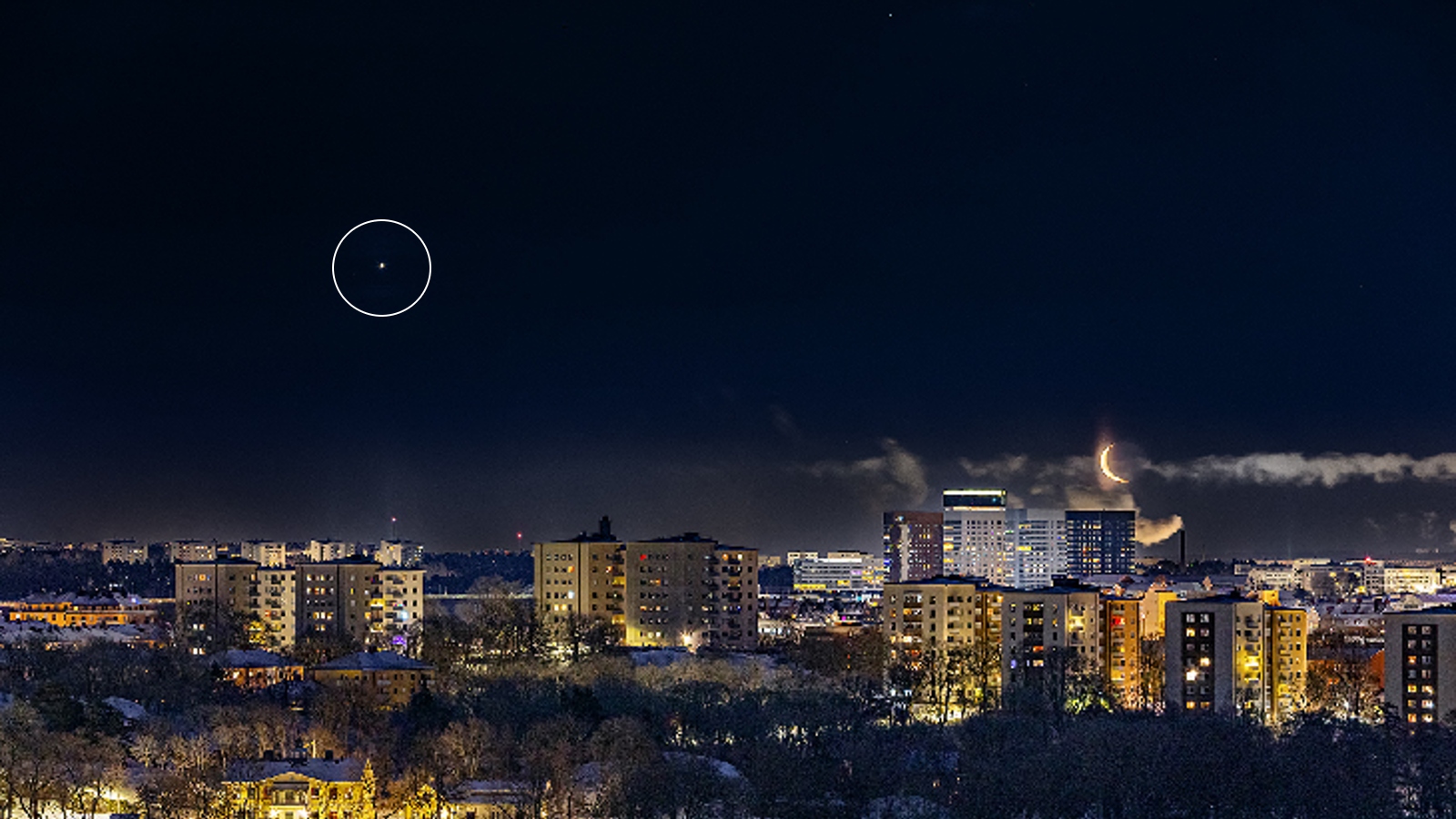
Venus briefly flashed a shimmering green light in the night sky above Sweden, new footage reveals. The rarely seen phenomenon is almost identical to the ethereal green flashes that are occasionally seen around the sun during sunrises and sunsets.
Photographer Peter Rosén captured the colorful flash coming from one of our closest planetary neighbors while he was watching Venus rise above the horizon in Stockholm in the early hours of Jan. 8, Spaceweather.com reported.
The bright flash, which lasted for around a second, was an "unexpected bonus" that added to what was already an awe-inspiring experience, Rosén told Spaceweather.com.
Similar green flashes are occasionally seen coming from the sun as the sun rises above an ocean horizon. The light shows are caused by light from the celestial objects being refracted, or split apart, as it passes through our planet's atmosphere.
Related: 10 bizarre phenomena that lit up the sky (and their scientific explanations)

Visible light is made up of different wavelengths of colored light, which collectively give the rays a white color. But when light from the sun shines through Earth's atmosphere, the individual wavelengths get partially refracted by gas molecules. This happens all the time: For example, the daytime sky appears blue because blue wavelengths scatter more than any other wavelength.
However, with the right conditions, such as clear skies, light from the sun and nearby planets can fully separate, especially when they are positioned near the horizon because the light has to travel through more of the atmosphere to reach the observer.
When this happens, shorter wavelengths of light, such as blues and violets, are scattered the most, while longer wavelengths, like reds, oranges and yellows, are more readily absorbed by molecules in the atmosphere. As a result, mid-length green wavelengths are sometimes the only colors that reach an observer. However, the angle has to be just right for this to happen, which is why it only appears to the observer as a brief flash.

In the recent footage of Venus, green is the most prominent color that flashes from the planet. But if you look closely you can also see yellow, orange, red and blue light shimmer around as well.
In some circumstances, ice crystals can also refract sunlight in the atmosphere to create rainbow-colored clouds and halos of light around the sun or moon. The same effect can also create rainbow rings around objects as light is refracted by large grains of floating pollen.
Green flashes have been spotted coming from Venus a handful of times before. Similar green flashes have also been captured in images of Mercury and the moon.
But unlike green flashes around the sun, which appear more frequently in the clear air above the ocean, these light shows are more commonly seen through extremely cold air, which magnifies the effect. This means planetary flashes are not so tightly constrained to the horizon, according to Spaceweather.com.







